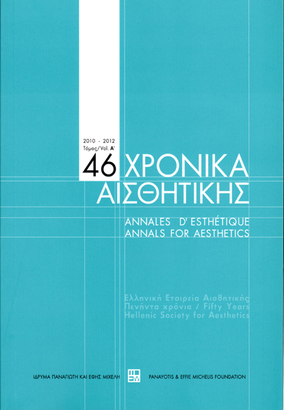Φανταστικά και μυθολογικά τοπία στην αρχαία ελληνική λογοτεχνία
Part of : Χρονικά αισθητικής : ετήσιον δελτίον της Ελληνικής Εταιρείας Αισθητικής ; Vol.39-40, No.1, 1999, pages 147-162
Issue:
Pages:
147-162
Parallel Title:
Mythological and imaginary landscapes in ancient greek literature
Section Title:
Μέρος B'=Part II
Author:
Abstract:
Ancient Greeks lived in nature and with nature. But for them landscape in the absence of man or God meant nothing. Ancient Greek literature contains descriptions of:1. imaginary landscapes, namely figments of imagination. Such landscapes are the holy places of: a) the Elysian Fields, b) the Isles of Blest (or Fortunate Islands), c) caves, d) the Mt Olympus, e) pastures and gardens.Descriptions of these places, inhabited only by gods, heroes and the righteous, were at times unrealistic, products of wild imagination (glass houses, honey and myrrh springs, flower seats, glass trees with glasses in the place of fruits, which once picked by table-mates automatically filled up with wine, et al.).These descriptions are rhetorical and the authors are influenced by epideistic rhetoric, a kind of rhetoric known as expressions.2. landscapes, which although real, are not described merely by a natural inclination but by the need to convey a message: i.e.a) in Plato’s Phaedo, Socrates underscores the difference between nature and town, the notional and the material world.b) in Hippolyte of Euripides, the forest symbolizes hero’s innocence, in contradistinction to Phedra’s passion.c) in other occasions, descriptions expresses escapism and desire for isolation.
Subject (LC):
Keywords:
φύση, τοπία, αρχαία ελληνική λογοτεχνία, μυθολογία
Notes:
Ανακοίνωση στο Συμπόσιο «Τέχνη και Τοπίο» της Κεντρικής Περιοχής της Διεθνούς Ομοσπονδίας Αρχιτεκτόνων Τοπίου (IFLA) στην Αθήνα, 8-10 Σεπτεμβρίου 1998




